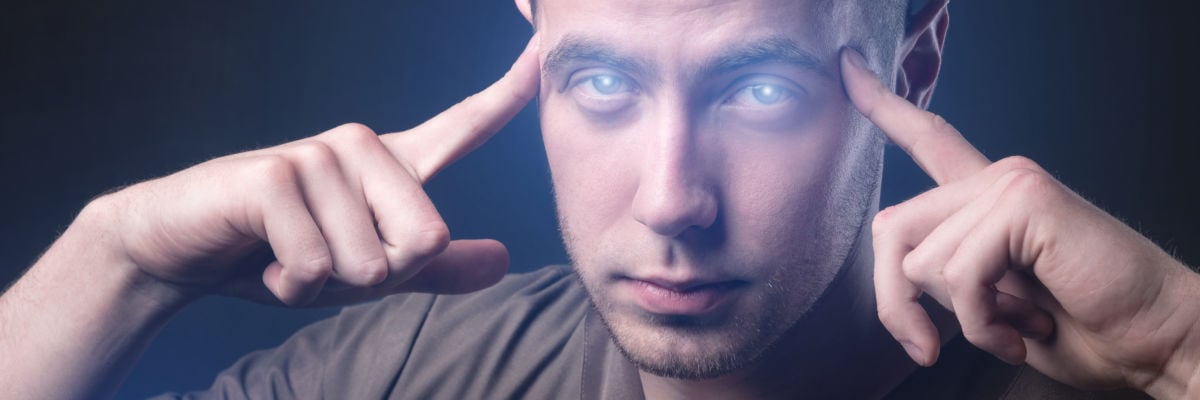
These days, there are numerous ghost-hunting and paranormal TV shows. A few examples include Ghost Hunters, Ghost Adventures, Kindred Spirits, Paranormal Lockdown, and Help! My House Is Haunted.
Frankly, these shows are silly. Shows like this are not taken seriously by competent paranormal investigators.
However, what is a Catholic to make of the subject of paranormal investigations itself?
The term paranormal is a new one. It was coined around 1905, and it indicates something beyond the normal. In Greek, para means things like “beyond,” “beside,” and “alongside,” so paranormal experiences are those that go beyond or are beside normal experiences.
This raises another question: What counts as “normal”? The answer—for the purposes of this term—is those experiences our modern, Western culture considers normal.
In many other cultures, experiences that we would consider paranormal (e.g., having a ghost show up) would be considered entirely normal. Indeed, in our own culture’s history, ghost appearances were considered quite normal, even if they weren’t as common as other experiences.
But today, Western culture has decided that a whole bunch of experiences aren’t normal—e.g., visions, apparitions, ghosts, angels, demons, psychic abilities, UFOs, Bigfoot, and so on—so they all get lumped together as “paranormal.”
What attitude have Catholics traditionally taken toward these? They’ve actually been quite open.
The historic Christian understanding of ghosts is that most of them are souls in purgatory who are allowed to manifest to the living to take care of unfinished business, serve as warnings, or ask for prayers.
UFOs are new, but the Church has been quite open to the idea of aliens existing. In 1999, St. John Paul II reportedly was asked if there are any aliens, and he replied, “Always remember: They are children of God as we are” (see Paul Thigpen, Extraterrestrial Intelligence and the Catholic Faith, p. 191).
Bigfoot is also new (at least to non-Native Americans), but we find Church Fathers open to the idea of strange, hairy, man-like creatures existing. St. Anthony and St. Jerome were both open to the idea of satyrs. (In fact, Anthony reportedly met one; see Jerome, Life of Paul the Hermit 8.)
When it comes to reported human abilities that today are classified as psychic—like precognition and psychokinesis—Doctors of the Church, including St. Augustine, Pope St. Gregory the Great, and St. Thomas Aquinas, have weighed in on them. Augustine was open to precognition, and Gregory the Great and Aquinas positively believed in it, with Aquinas calling it “natural prophecy” to distinguish it from the supernatural prophecy that God gives.
Gregory also believed in psychokinesis (mind over matter) as a spiritual gift, and Aquinas held that it was a purely natural ability that could be used to injure another person. (This was his explanation for the Evil Eye.)
Beginning in the late nineteenth century, the modern science of parapsychology—which studies psychic functioning and life after death—was organized, and there have been respected Catholic parapsychologists like the English Jesuit Fr. Herbert Thurston (1856-1939) and the Austrian Cistercian abbot Fr. Alois Wiesinger (1885-1955).
When it comes to paranormal investigations, a classic work dealing with the subject was written by Cardinal Prosper Lambertini (1675-1758), who reigned as Pope Benedict XIV from 1740 until his death.
The four-volume work, which is still used today, is titled Doctrina de servorum dei beatificatione et beatorum canonizatione (Latin, “Teaching on the Beatification of Servants of God and the Canonization of Blesseds”). The first three volumes of it have been translated into English under the title Heroic Virtue.
Meant to be used in the process of canonization, the work deals with subjects including how to evaluate private revelations and miracles—and how to determine whether reports of them have natural, paranormal, supernatural, or demonic causes.
Partially based on the principles this work contains, the Church today has official procedures for conducting several types of paranormal investigations.
The first is the investigation of private revelations. In 1978, the then-Congregation for the Doctrine of the Faith (CDF) published a set of guidelines for bishops on how to evaluate them. At first, this document was distributed only to bishops, but it was leaked, and it was officially published by the CDF in 2011.
Summarizing the general thrust of the guidelines the Church uses, Benedict XVI stated, “The criterion for judging the truth of a private revelation is its orientation to Christ himself. If it leads us away from him, then it certainly does not come from the Holy Spirit, who guides us more deeply into the Gospel, and not away from it. Private revelation is an aid to this faith, and it demonstrates its credibility precisely because it refers back to the one public revelation” (Verbum Domini 14).
He also stated, “Ecclesiastical approval of a private revelation essentially means that its message contains nothing contrary to faith and morals; it is licit to make it public and the faithful are authorized to give to it their prudent adhesion. . . . It is a help which is proffered, but its use is not obligatory.”
A second type of paranormal investigation the Church conducts is miracle reports. This can happen, for example, when a eucharistic miracle is reported in a parish, but it most normally happens in connection with causes for canonization.
The Dicastery for the Causes of Saints maintains a board of medical experts (not all of whom are Catholic), known as the Consulta Medica, to examine healings that are proposed as miracles.
To conduct its work, the Consulta enlists physicians with expertise in particular medical conditions to determine if there is any scientific explanation for a healing.
To ensure authenticity of medical miracles, the Consulta still follows the criteria established in 1734 by Cardinal Prospero Lambertini, the man who set down the foundational principles for judging modern sainthood causes. To begin with, the disease must be a serious one, considered difficult or impossible to cure. It must not be at a stage where it has run its course and spontaneous regression is possible. Pharmaceutical treatment should not have been used; if it has been, the medicine must be shown to have had no curative effect. The healing must be sudden and instantaneous. It must be complete, and not simply an improvement. It must not follow a physical crisis that could have precipitated a natural cure. Finally, there must be no relapse of the disease or associated infirmity (John Thavis, The Vatican Prophecies, p. 189).
If these criteria are met, and there is no scientific explanation for a healing, the matter is turned over to a panel of theological experts to consider its religious dimension and whether it can be confidently attributed to the intercession of a proposed saint.
A third type of paranormal investigation the Church conducts involves reports of the demonic. There are a variety of ways that the demonic can manifest. Infestation occurs when one or more demons manifest in a specific location. Oppression occurs when they attack things in a person’s life. Vexation occurs when they attack his body. Obsession occurs when they attack his mind. And possession occurs when they take control of him.
As always, the Church applies critical thinking to these cases and does not just assume that a report actually involves the demonic.
Thus, for example, medical and psychological experts may be consulted to rule out the possibility of mental or physical illness being responsible for the report. There can be a variety of other natural causes, including imagination, misinterpretation, and hoax.
To exclude these as causes for a report of possession, something paranormal also needs to be happening. This might be displaying knowledge that the person should not have (e.g., speaking a language the person hasn’t studied or knowing that an object has been blessed) or performing a physical feat the person should not be capable of (e.g., superhuman strength or levitation).
However, just because something paranormal is happening, that doesn’t mean a demon is responsible. Speaking in tongues is a gift of the Holy Ghost, Samson was endowed with supernatural strength, and both St. Teresa of Avila and St. Joseph of Cupertino levitated.
Vatican exorcist Fr. Corrado Balducci (1923-2008) pointed out that cases of unusual knowledge could just be someone’s extra-sensory perception (see his book The Devil), and Roman exorcist Fr. Gabriele Amorth even used “sensitives” (what they call psychics in Italy) to help him investigate exorcism cases (see his book An Exorcist Explains the Demonic).
Therefore, something more is needed to show that an apparent possession is genuinely diabolical, and that something is if the possessing personality displays a marked aversion to the holy. If it can’t stand the name of Jesus or an icon of Mary or the recitation of prayers, then that provides evidence that it is actually a demon.
Thus, if you (1) have an alternative personality manifesting through a person and (2) this personality is capable of doing preternatural things and (3) is markedly averse to the holy, you have a plausible case of demonic possession.
We thus see that the Church has a sophisticated approach to the paranormal. Unlike the superstitious, it does not believe that all reported experiences are genuinely paranormal. Unlike hardcore skeptics, it does not simply dismiss them. And unlike some, it does not interpret them all as demonic.
The Church has an open-minded but critical approach, and it even conducts its own paranormal investigations (albeit ones that are vastly better than what you see on ghost-hunting TV shows).
In short, the Church seeks to apply to a variety of different experiences the basic principle that St. Paul applied to prophecy: “Test everything; hold fast what is good” (1 Thess. 5:21).



